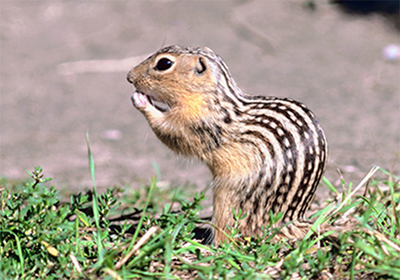
Hibernation is one of nature’s strangest quirks, inducing bears and other mammals to pack on massive weight—amounts that would be unhealthy for humans—so they can survive months of slumber. Yet when these animals reemerge, they are as fit as ever.
Now University of Utah Health scientists say they have detected new genetic clues about this phenomenon that could lead to better understanding and treatment of obesity, diabetes and other medical conditions that afflict millions worldwide.
The researchers wanted to find if hibernating animals could help them detect new ways to prevent or control obesity, which is a global epidemic.
They focused on four hibernating mammals: the thirteen-lined ground squirrel, little brown bat, gray mouse lemur, and lesser Madagascar hedgehog tenrec. After comparing their genetic profiles, the researchers concluded that these mammals had independently evolved a compelling set of short, DNA snippets located near genes linked to the onset of obesity in people.
Based on this and other findings, the scientists suspect that hibernating mammals have evolved ways to “turn off” specific genetic signals controlling the activity of obesity genes. This discovery could lead to treatments that help reduce the risk of obesity in humans.
